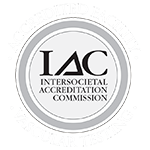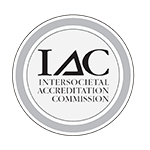
July is UV Safety Awareness month and with summer in full swing and more skin exposed to the warm sun, this is a good time to remind you of the dangers of ultraviolet (UV) radiation and how they may relate to spider veins.
What is ultraviolet radiation? These are invisible rays that are part of the energy that comes from the sun. Overexposure to the sun’s UV rays can cause damage to the skin and cause different types of skin cancer. Sun damage can also enlarge blood vessels and draw them closer to the skin resulting in the spider veins we may see on our body.
There are two types of ultraviolet rays you should know about: UVA rays and UVB rays. Ultraviolet B (UVB) rays are short, high-energy wavelengths that are absorbed by the outermost layer of the skin. Ultraviolet A (UVA) rays - longer than UVB rays - can also do lasting damage. They penetrate the skin more deeply than UVB rays, affecting the DNA of the cells in the dermis, attacking cell membranes, and changing the proteins that make up collagen and elastin, which support the skin's fibrous structure.
As a result of this UV damage, your blood vessels are likely to weaken and dilate, causing the possibility of spider veins. While many cases of spider veins occur in the vessels of your legs, it’s not uncommon that they can also affect areas of your face. Even though this is generally a cosmetic issue, they can be quite symptomatic, causing aches and burning sensations.
What Can I Do to Protect Myself from UVs?
Primary prevention involves reducing sun exposure. We recognize it’s nearly impossible to eliminate exposure, especially during the summer, but some common sense techniques will help, such as:
- Minimize or avoid being in the sun between 10 am and 4 pm, especially if you are fair-skinned. And if you are going to be out at these times, wear appropriate clothing and use sunscreens.
- Wear long-sleeved high-necked shirts and pants made of tightly-woven cloth, which will cover most of the body skin, in addition to wide-brimmed hats and good-quality sunglasses.
- Use sunscreens (even in the winter) that are broad-spectrum and have an SPF of at least 40 and above as recommended by the American Dermatological Association.
- Get frequent checkups of the skin to detect any premalignant changes.
And if spider veins do appear, either from sun damage or other factors, there are sclerotherapy treatments that may be used to remove these problem veins. Schedule an appointment today to determine the best treatment for you.







